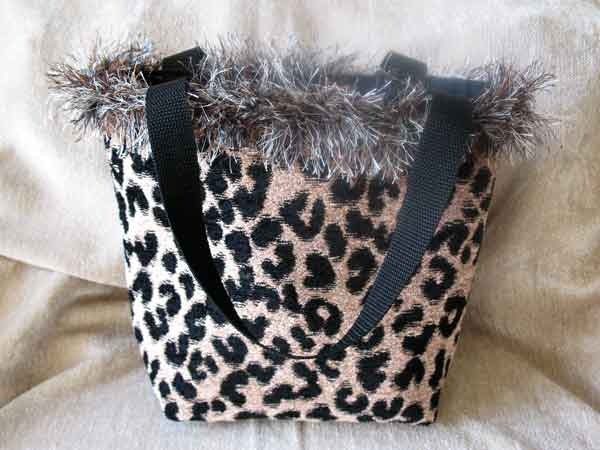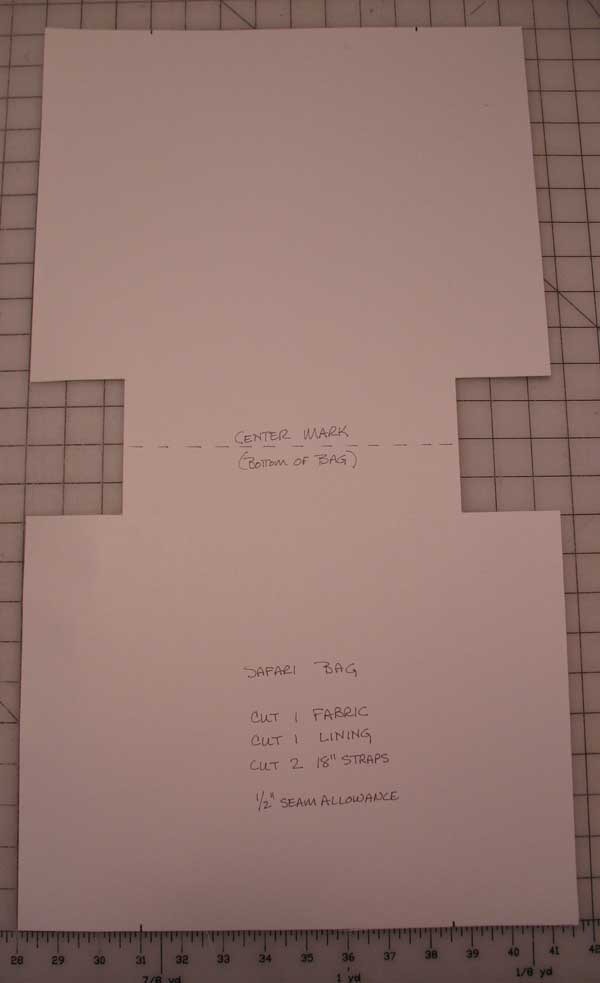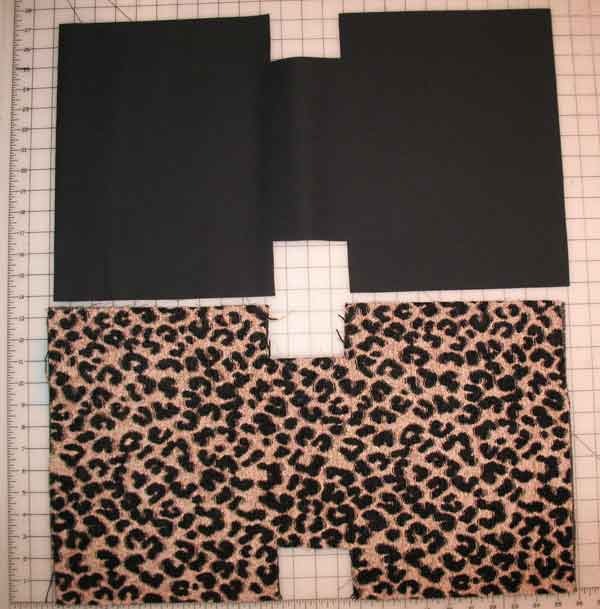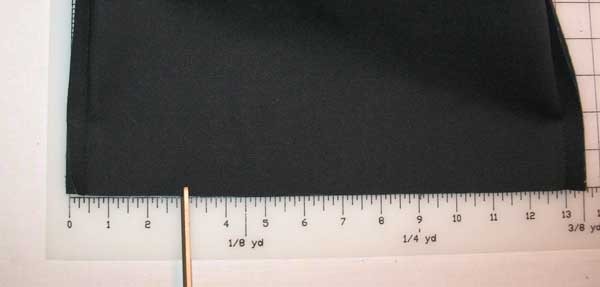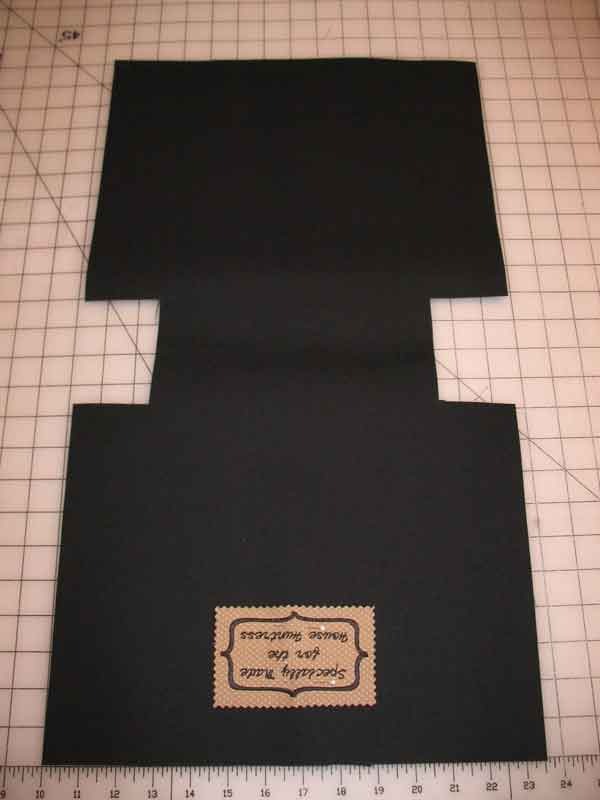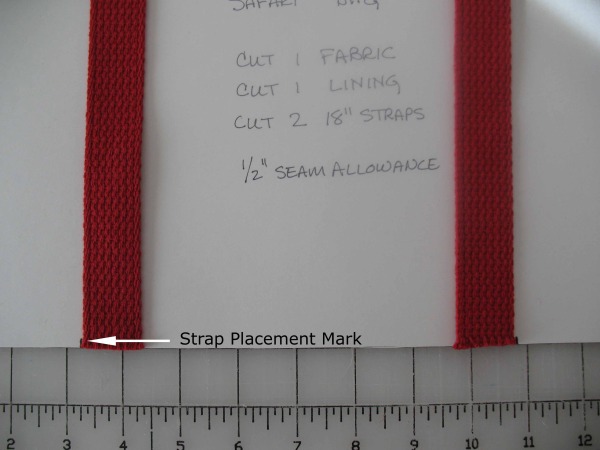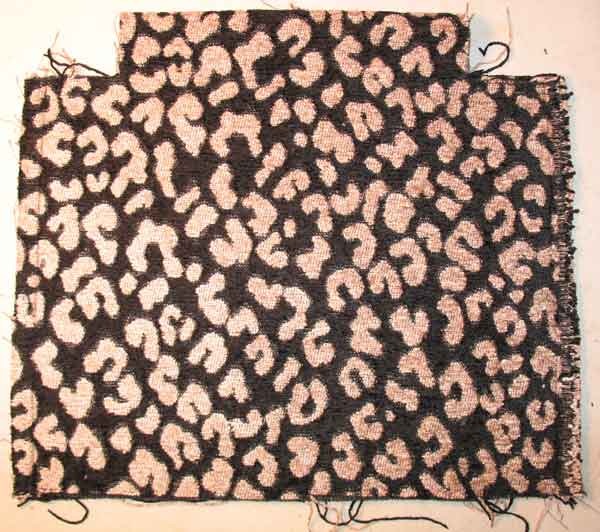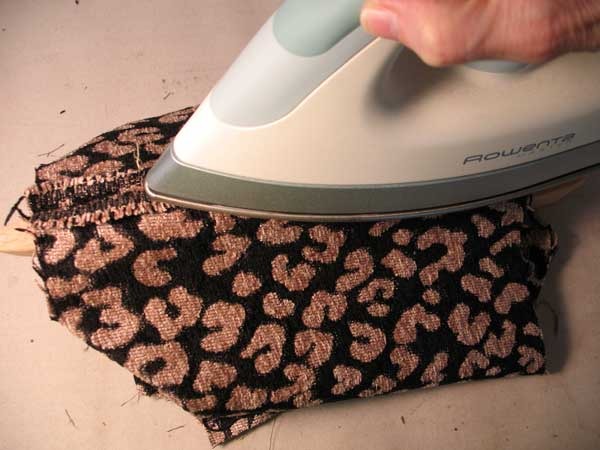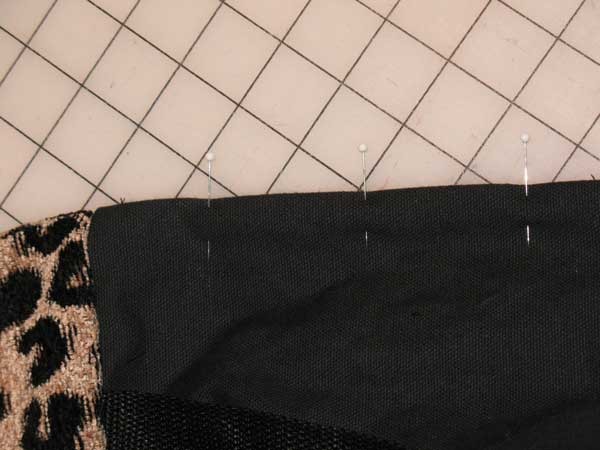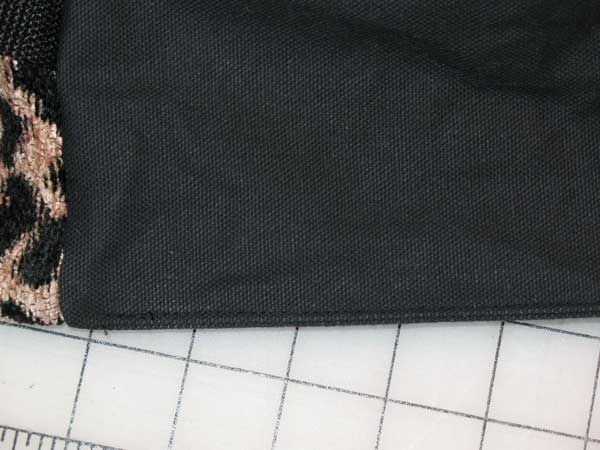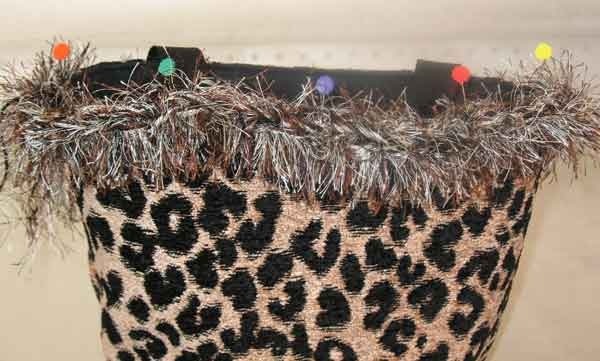Santa Tote Bag Tutorial
 Tuesday, November 30, 2010 at 6:00AM
Tuesday, November 30, 2010 at 6:00AM 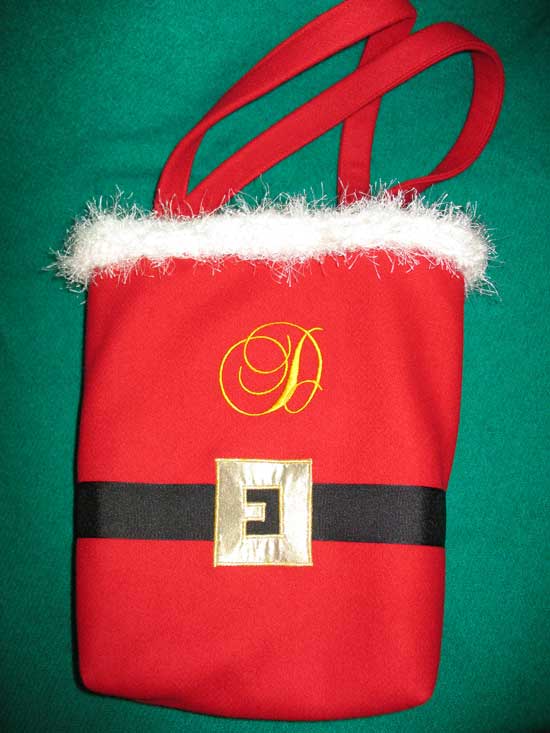
Materials:
- ½ yard 60” heavy weight wool
- ½ yard cotton fabric for lining
- sewing thread
- embroidery thread and monogram design (optional)
- 1.5” black grosgrain ribbon, 28”
- scrap of gold lame
- scrap of interfacing
- scrap of fusible web
- metallic gold thread
- Yarn for trim (I used Lion Brand Fun Fur, Festive Fur and Homespun)
- Double pointed knitting needles
The sample bag was made from coat weight red wool with a novelty cotton fabric lining. All seams are ½” unless otherwise noted.
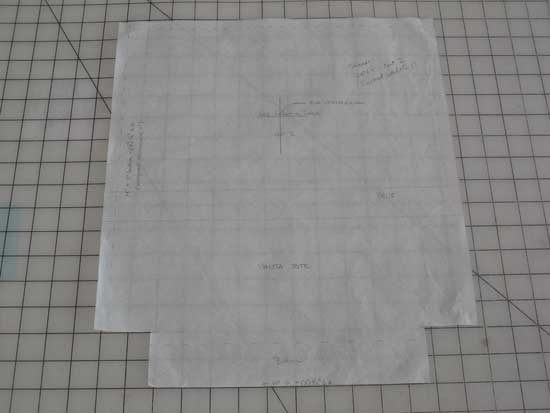
Make a paper pattern. Draw a rectangle 16” tall by 14” wide. Cut out 2” squares from both lower corners. Label the pattern piece. I also like to make notes on the pattern so when I use it in the future I will have the details at my fingertips such as seam allowance and strap size.
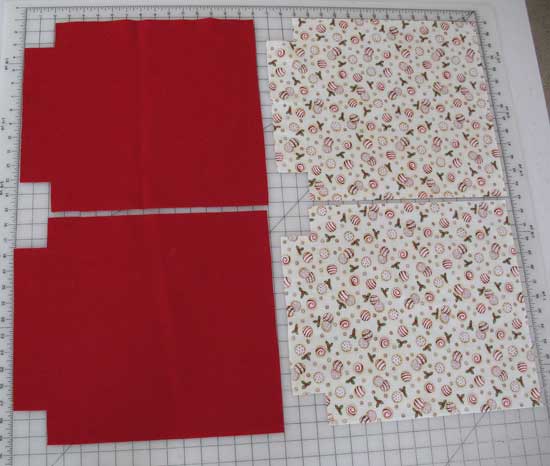
Cut out two outer fabric pieces and two lining pieces. If your fabric does not have an obvious right and wrong side (as with the wool) mark the same side of each piece with tape to be consistent when constructing the bag.
Cut two straps, 24” by 4” (note the size on the pattern for future use).
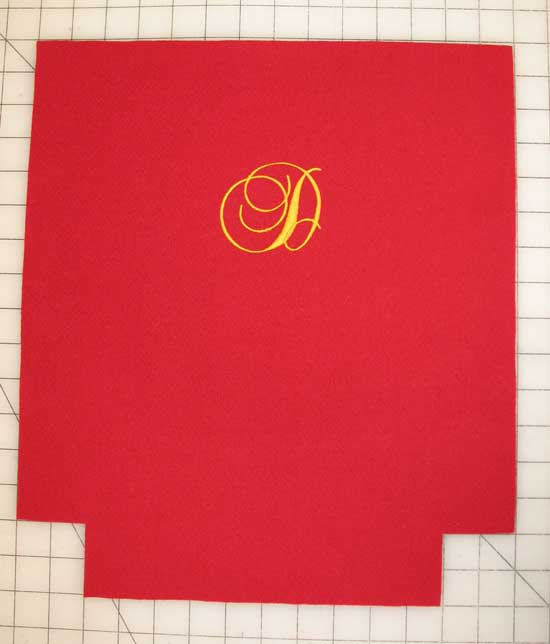
Monogram, if desired. The monogram should be centered vertically and placed 5” down from the top edge of the bag.
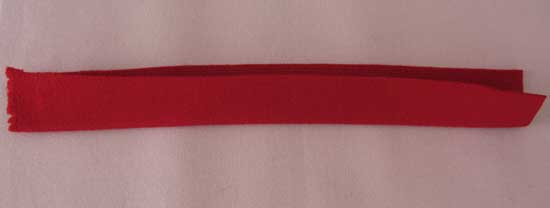
Fold each strap in half lengthwise and press.
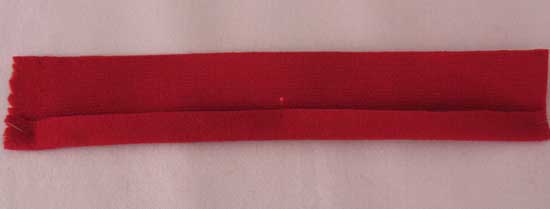
Fold in each edge to meet at the fold line. Press
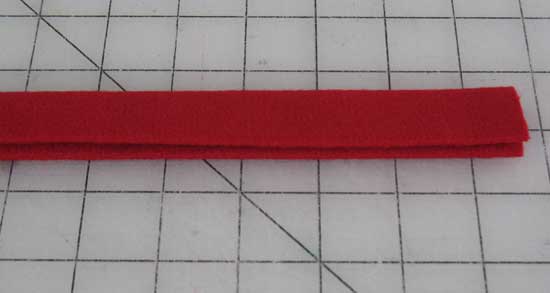
Fold in half again along the original fold line. Press.
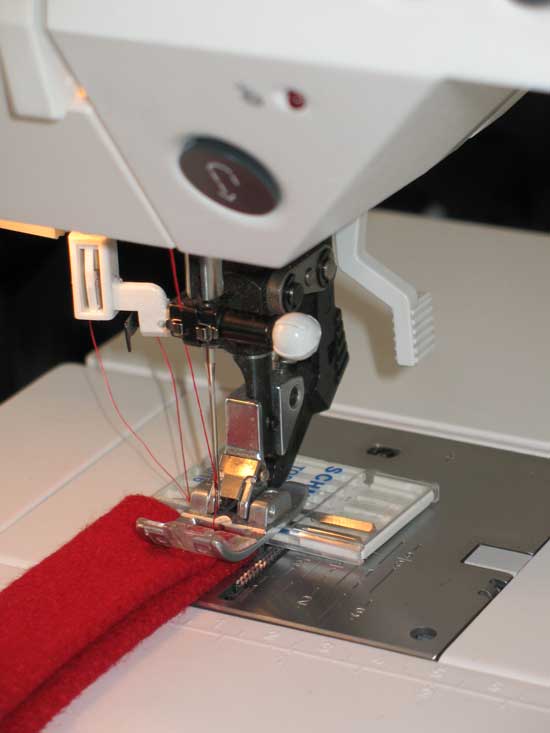
Edgestitch the strap using a 100/16 topstitch needle and 3.5 mm stitch length. A needle box placed under the back of the presser foot ensures a smooth start to stitching.
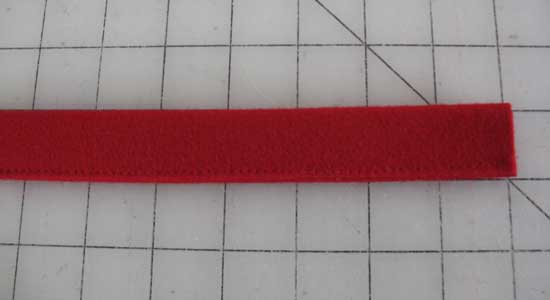
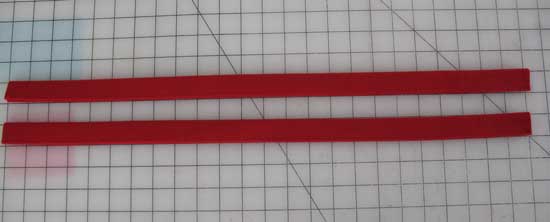
Repeat with second strap.
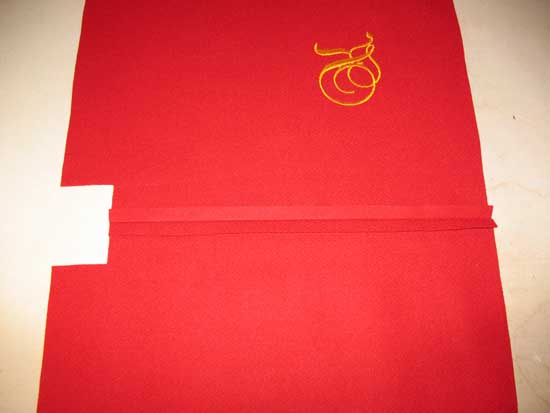
Sew one side seam in the outer fabric.
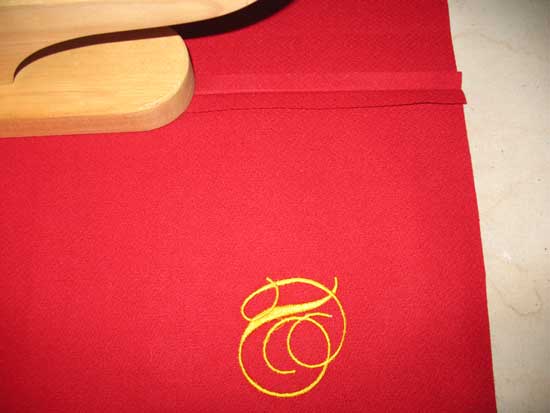
Press seam open. If you are using a heavy weight wool it helps to use a clapper to press the seam.
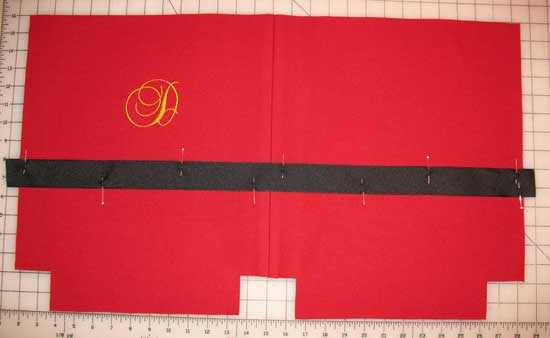
For the belt, cut 1-1/2” grosgrain ribbon 28” long. Place top edge of ribbon 8” from the top edge of the tote (an easy way to do this is to align the fabric and ribbon on a gridded cutting surface as shown). Allow the ends of the ribbon to hang off the sides of the bag. Edgestitch in place. Press.
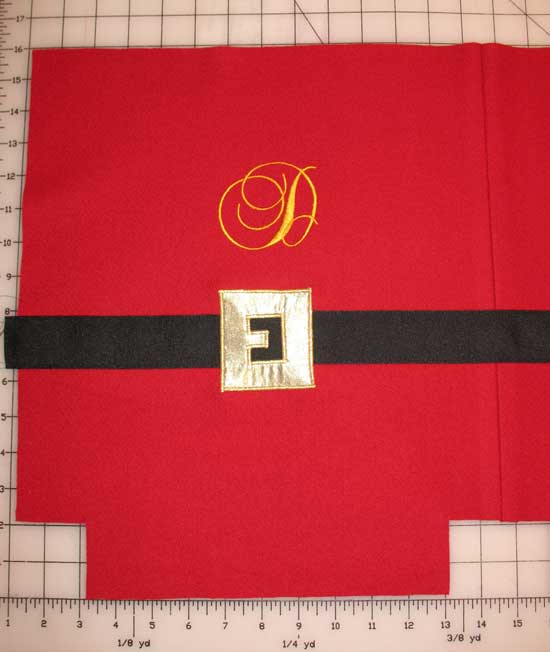
To make the buckle, draw a rectangle, 2 ½” wide by 2 ¾” tall onto the paper side of a piece of fusible webbing. The center cut out is 1” wide by 1 ¼” tall with a small protrusion centered along one of the longer sides. Interface a piece of lame with a piece of heavy weight interfacing. Fuse the webbing to the interfacing side of the buckle and cut out along the drawn lines. Center the buckle over the ribbon and fuse into place. Satin stitch (zigzag 3.0 width, 0.4 length) along all of the edges using metallic thread, if desired. Do not use metallic thread in the bobbin.
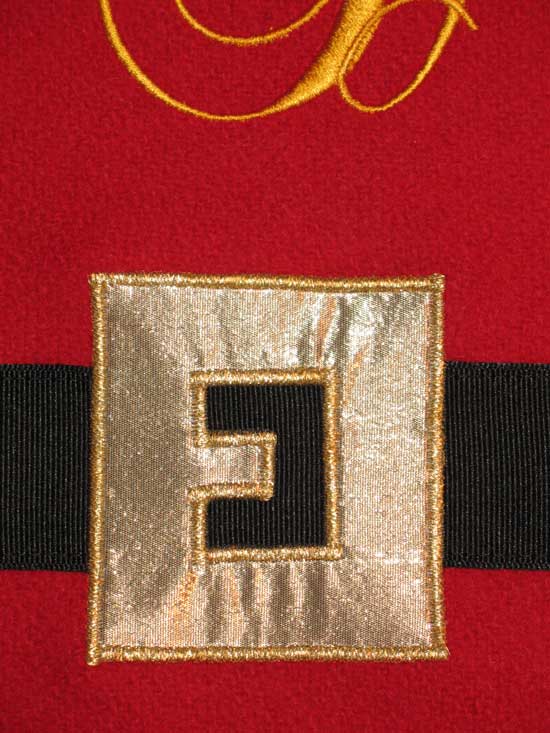
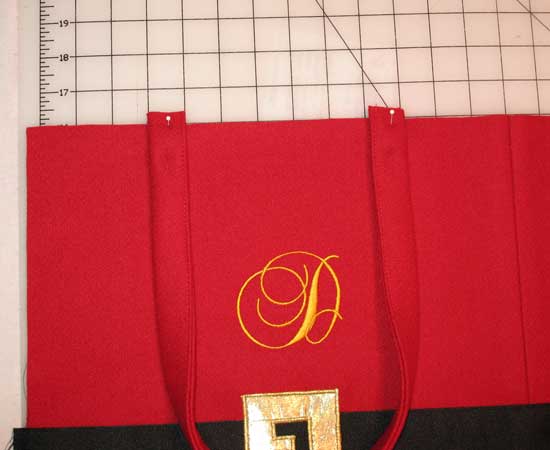
Attach the straps. Remember to account for the unsewn ½” seam allowance along the outer edges. Allow ½” of each strap end to overhang the top edge of the bag. Using the photo above to aid in placement and placing the sewn edge of the strap to the inside of the handle, pin the strap in place. On the unsewn edge, measure in 3 ½” and place the outer edge of the strap along that point. The other end of the strap will be positioned 3” in from the sewn seam line. There will be 5” between the two straps. Stitch the ends securely in place.
Fold the bag in half, matching the raw side edges. To ensure that the belt matches when sewn, begin by matching the belt at the seam line and basting across. Check for accuracy and if necessary, remove basting and restitch. Once the belt has been stitched to your satisfaction, pin the remaining side seam and stitch, easing to fit as needed. Trim ends of the ribbon even with the fabric.
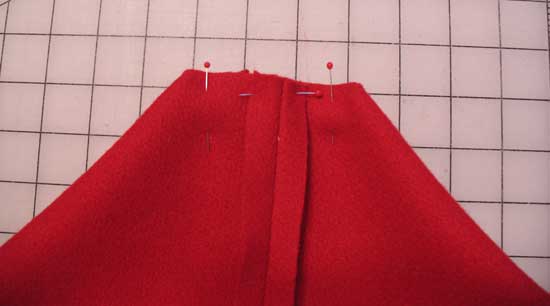
Sew the bottom seam between the square cutouts. Press the seam open. Box the corners by matching the cut edges of the square cutouts and stitch across. If necessary, pin the bottom seam allowance open to ensure that it remains so when stitching. Press flat. Set aside the outer portion of the tote while you prepare the lining.
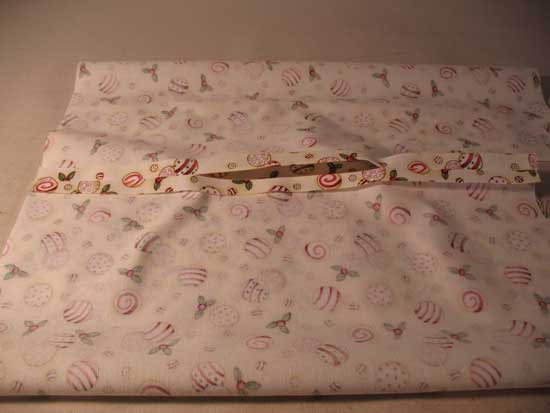
Stitch both side seams of the lining pieces, right sides together, leaving a 5” opening in one seam for turning the bag. Press both seams open.
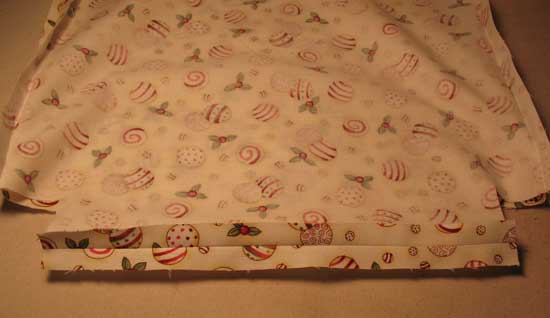
Sew bottom seam and press open.
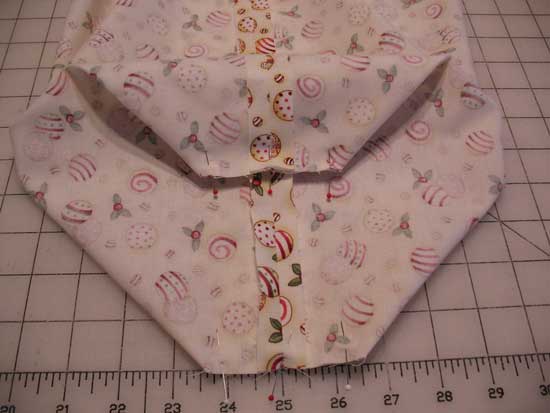
Prepare the boxed corners in the same manner as for the outer bag. Press flat.
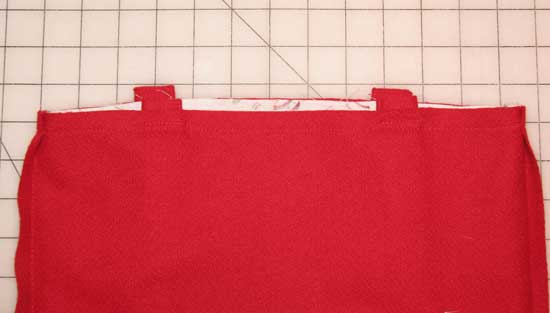
Turn the outer bag inside out. Drop the lining inside the outer bag, right sides of fabric together, and pin along the top edge. Stitch around entire upper edge.
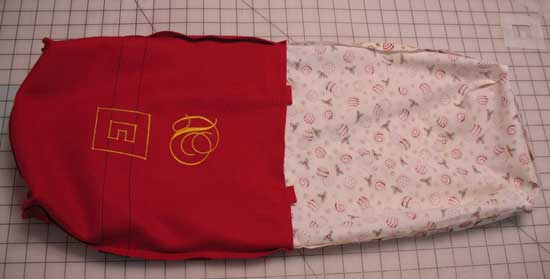
Pull the lining out and press the seam allowances toward the lining (the wool will be pressed flat and the lining seam allowance will be pressed back on itself.)
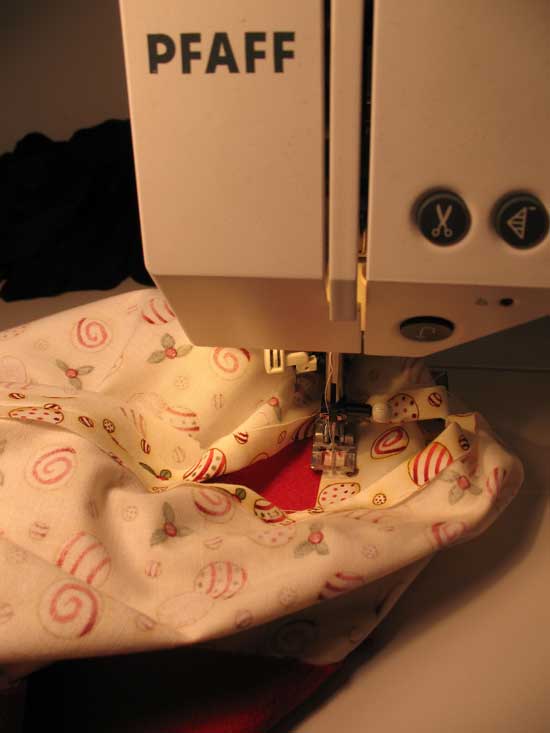
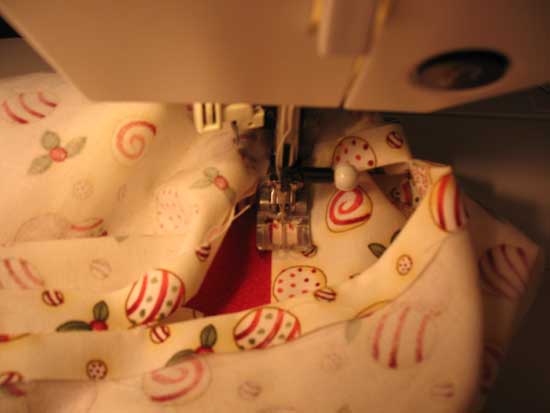
Working through the 5” opening in the lining side seam, understitch the lining to the seam allowances. You will be stitching on the lining fabric and through both the wool and lining seam allowances.
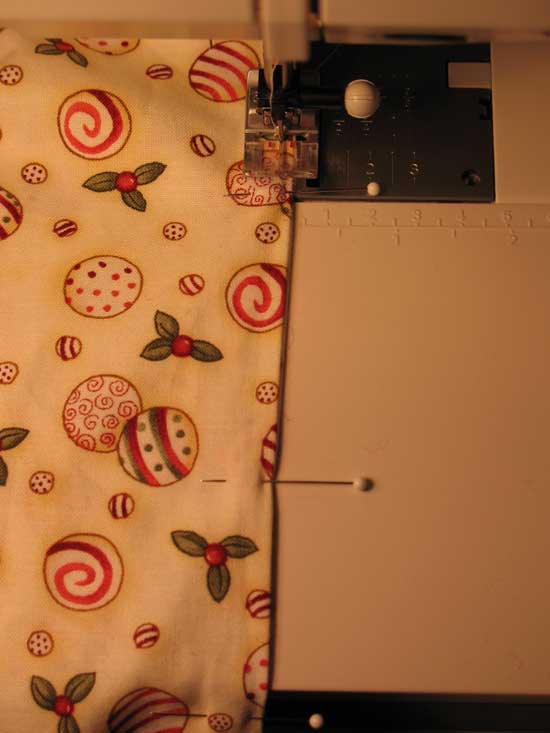
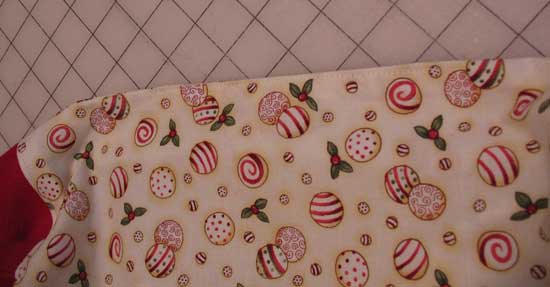
Turn the bag right side out. Reach through the opening in the lining and push out the corners of the outer bag very well. Pin the opening in the lining closed and edgestitch (or, alternatively, sew closed with hand stitches). Push the lining down into the bag.
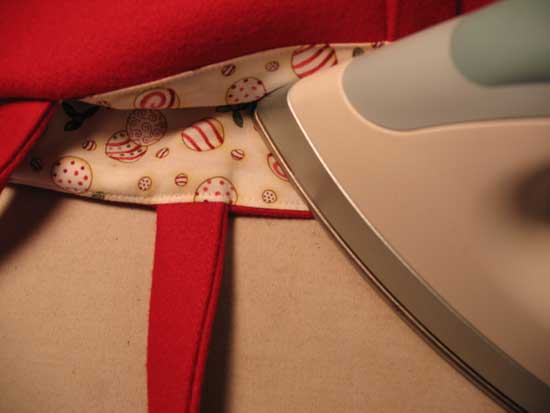
Press the top edge with the iron, favoring the outer layer slightly, as shown.
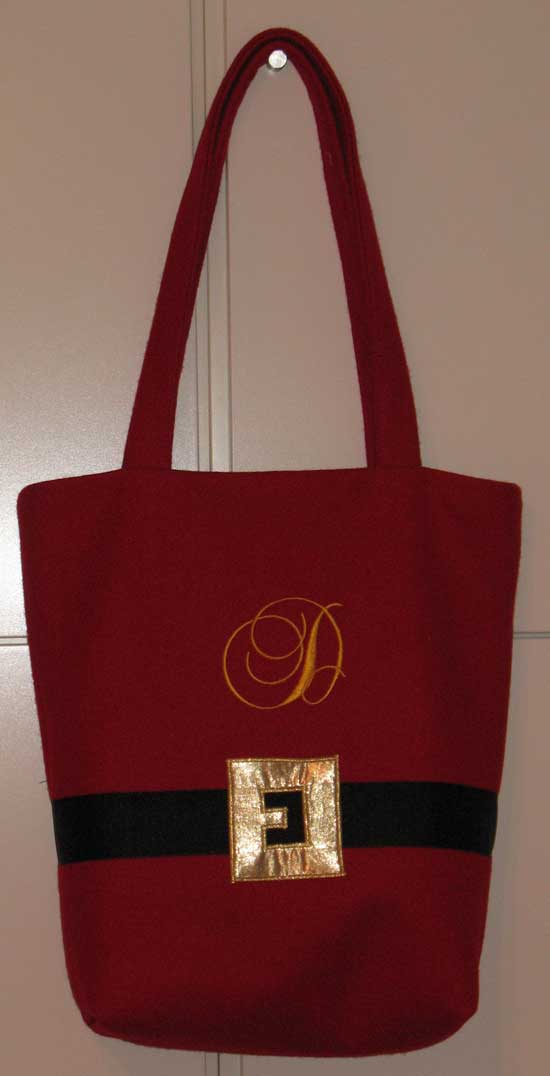
This is the completed bag awaiting the trim. Measure around the top edge of the bag with a tape measure to determine needed trim length.
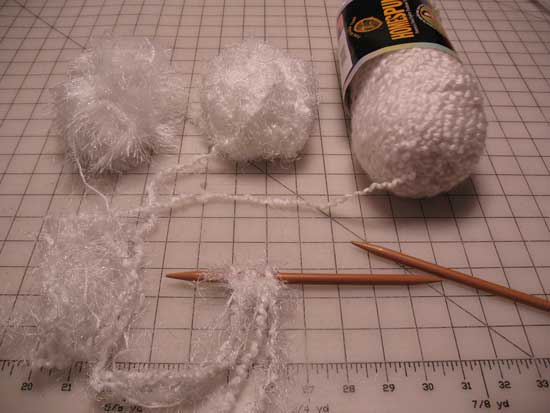
The trim was created using three different white yarns from Lion Brand Yarn, Fun Fur, Festive Fur, and Homespun. All three yarns were held together and knitted as one. Knit a three stitch I-cord (Here is a great video that will walk you through knitting an I-cord if you don’t know how.)
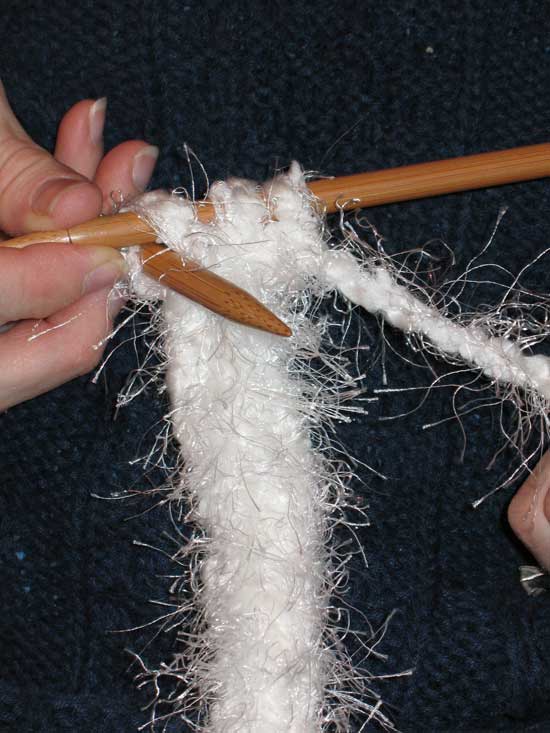
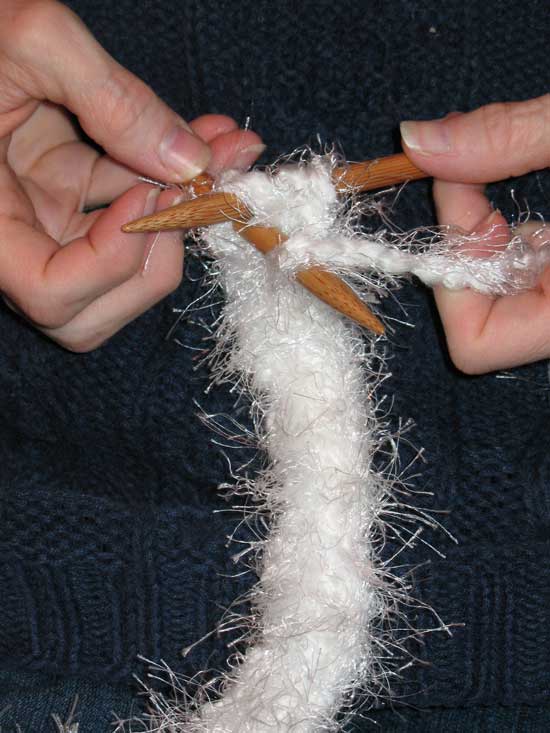
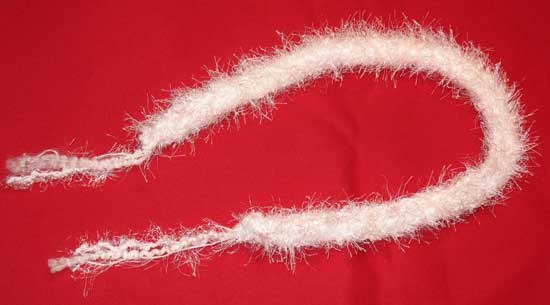
Continue knitting until the desired length has been achieved and bind off.
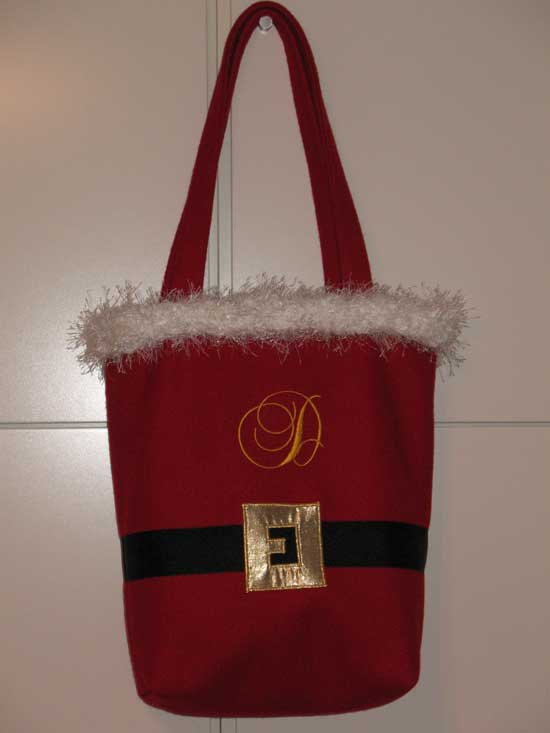
Hand stitch the trim around the top of the bag, catching the outer layer of the bag only.
HOHOHO!





